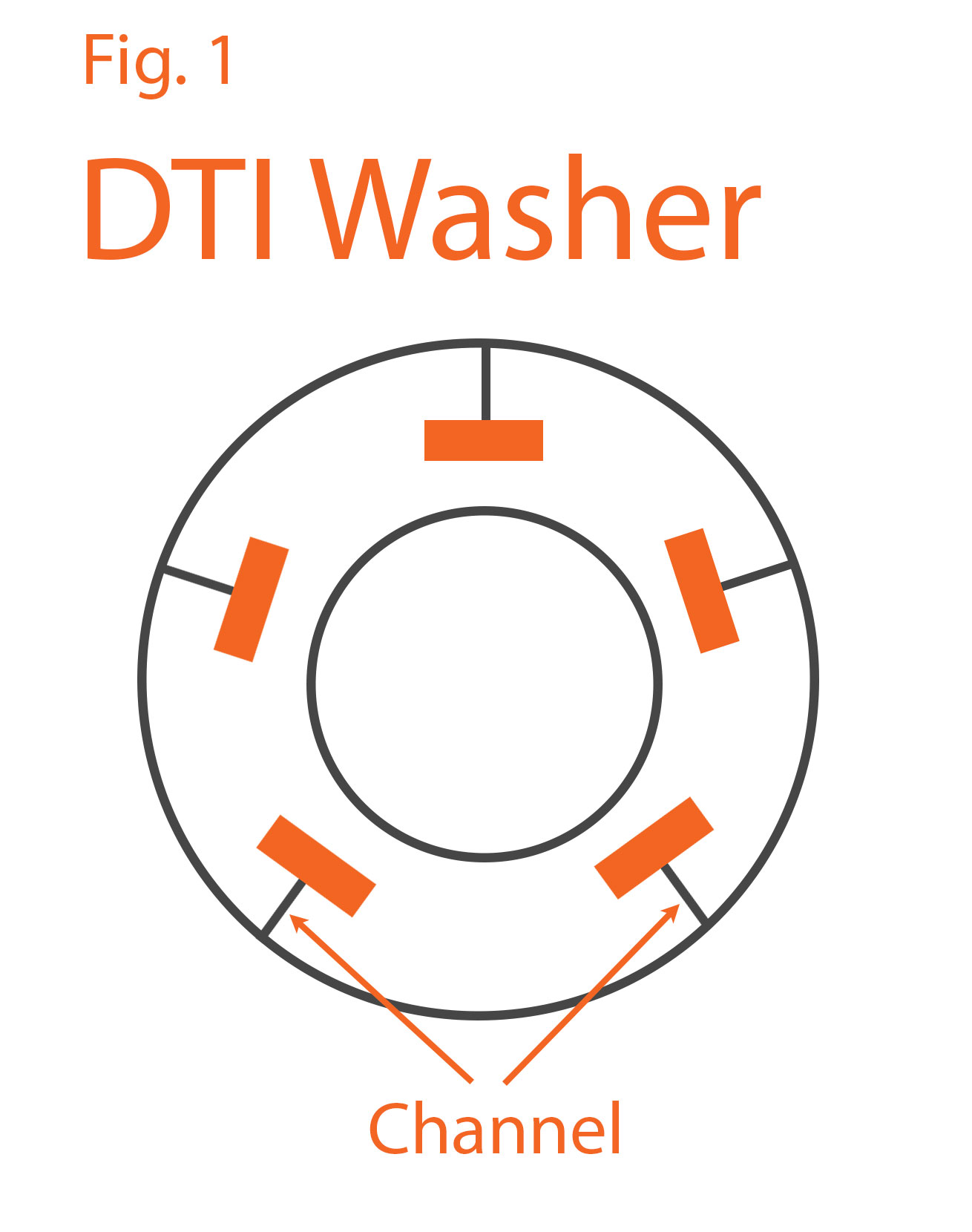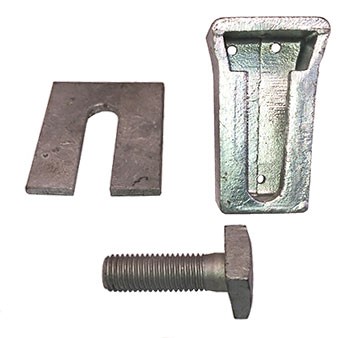Direct Tension Indicator Washers
The DTI Washer, also known as the Squirter Washer, has been around a while in various forms. It has two basic functions; 1) to assure the bolt is delivering the required tension on the connection, and 2) speed of installation.
Structural Steel, Bridge or Slip Critical Connections are required to meet a minimum compressive strength. The standard TC Bolt has a spline that will shear off when the appropriate tension level is achieved. This is the fastest, most efficient method of bolting connections but it cannot guaranty the plies are compressed as the sheared spline would indicate. The pressure the TC Bolt spline is responding to it the torque created as the nut tightens. The problem is the same torque is generated if anything jams the nut while it tightening. Any debris in the threads, typically sand or a metal shaving can act as a wedge jamming the nut from turning and developing the torque to snap the spline prematurely.
The DTI, or Direct Tension Indicator Washer, functions on a completely different premise. It measures the pressure the bolt is delivering to the steel plies. By offering resistance as the bolt is compressed the DTI will hold its shape until the compression reaches the required amount. At this point the ridges will begin to compress. As they do, the semi cured silicone will exit the cavity through the small channels on the bottom of the DTI Washer. See Fig. 1. As compression continues the silicone visible at the sides of the washer increases. Once the correct pressure is determined it is possible to estimate the pressure on subsequent connections by the amount of silicone at the sides of the washer.
When using Direct Tension Indicator Washers correct assembly is important, and there are several ways it can be done. The image to the right shows one method of assembly before compression begins. The DTI Washer can sit directly on the steel member surface, but the compression bumps must be facing the nut. An F-436 hardened washer should sit between the Squirter Washer and the Heavy Hex Nut.
In all cases the ridges do not face the steel member, As well, it is important they do not touch the turning surface directly. They can sit under a bolt head without a washer as long as the bolt head will not be rotating when the bolt is being tightened.
For more detailed information on DTI washers click here.






